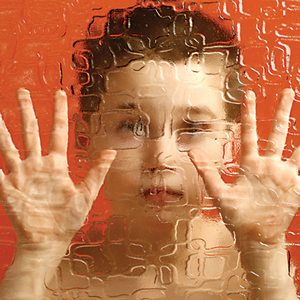
When Erin Redmond’s daughter Olivia was born, she was a beautiful baby. But as she developed, her mom was troubled by her lack of speech. While most babies are forming sentences by age three, Olivia was not even using words. Her pediatrician and subsequent doctors initially said she was fine. Not until she was five did her parents get a definitive diagnosis of pervasive developmental disorder and later, autism. “We were told she would never speak – never be able to attend a regular school, never work nor live independently. We were devastated,” says Redmond.
Autism is a disorder characterized by unusual delay in speaking, atypical social interaction, and exaggerated responses to stimuli that seem ordinary to others. The autism spectrum covers wide variations of the disorder, including Asperger’s syndrome, often thought of as a milder form of autism with some of the social challenges but less of a manifestation in the areas of language.
In the United States, of primary concern for medical practitioners and parents is the apparent increase in cases of autism. The Centers for Disease Control and Prevention (CDC) estimates that about 1 in 88 children has been identified with an autism spectrum disorder. This new estimate marks a 23 percent increase since the last report in 2009, and a 78 percent increase since the CDC’s first report five years ago. While the CDC states that there has been a very significant increase in numbers, the cause or causes of autism are unknown.
An autistic child may face just a few challenges – or very many. He may be high-functioning, or even brilliant, as are some children who have been diagnosed with Asperger’s syndrome. Or, she may be so developmentally challenged that mastering basic self-care is unlikely. But for kids with autism, the inability to understand and relate in social situations often presents the biggest challenge to both the children and their families.
One of the unusual aspects of autism spectrum disorders is that a child may be progressing normally and then either stop gaining new skills or even lose skills already developed. But, in almost all cases, autism disorders are apparent before age three. Parents usually become aware of these problems early on, but often cannot get a diagnosis until years later.
Lindsey Hayes’ son Ethan was a colicky baby and not a very good sleeper, but otherwise normal. But by age one he could only say a few words. When Ethan was 16 months old, he stayed with his dad for several days (Hayes and her husband were separated). When Ethan came home from the visit, it was clear to Hayes that Ethan had lost the words he had been using since she had seen him last. She was deeply concerned. Finally at age two, his pediatrician agreed to administer the developmental delay test. Ethan was autistic. Hayes says she cashed in her retirement fund to take Ethan to the Kennedy Kreiger Center at Johns Hopkins in Baltimore. “Johns Hopkins was fantastic. They provided great information and services for his autism and gave him the additional diagnosis of mitochondrial disease. That helped a lot.”
Getting an evaluation and a solid diagnosis for autism spectrum disorders may be difficult, but both are very important. Insurance benefits, school assistance, and funding are dependent upon this documentation. Parents need to know exactly what the school or insurance company requires. It’s best to connect with a healthcare provider who may be experienced in the required documentation.
As kids get older, obtaining help from the school system can be more of a problem for families with high-functioning kids. For years, Terry Duke attempted to get the public school system to acknowledge that her son Daniel needed special services. His school refused because he was passing his courses. She and her husband finally took Daniel to the Kluge Center in Charlottesville and were able to get a definitive diagnosis of Asperger’s syndrome. But because testing and a full, formal evaluation were not completed, the public schools still would not acknowledge his condition. Two years later, the family was able to get the full evaluation that the school required.
Despite the documentation, the school still denied services for Daniel. He was refused an individualized educational plan (IEP) because he was able to keep up with the schoolwork. Duke says, “So each year, I met with every teacher he had and explained his condition.” One teacher even told Duke that she had never heard of Asperger’s. That constant communication paid off, says Duke, and now Daniel is doing very well in high school.
For the Redmonds, doing something most families do every day without issue – sending their kids to school – was traumatic at first for both parent and child. Olivia was asked to leave one preschool. Next, they tried Montessori which didn’t work out either. Some years in public school went well and others were terrible according to her mother. “It depended upon the teacher and how eager they were to try different methods to work with her,” Redmond says of her experience over a decade ago. “Now they have Applied Behavioral Analysis (ABA) methods – almost one-on-one training, but when Olivia was a baby they did not.”
Many public schools have specialty programs in-house for kids with autism. The Richmond area also has several private schools which specialize in working extensively with kids with autism disorders, like the Faison School for Autism. This Richmond facility offers a comprehensive curriculum for school-age children and their families and bases its services on the principles of ABA and components of the Comprehensive Application of Behavior Analysis to Schooling (CABAS®) philosophy. Because of its desire for low student-toteacher ratio for instruction, Faison School keeps its enrollment just a bit over one hundred students. The facility is currently excepting applications for admission.
Dominion school for autism is another school dedicated to teaching children with autism. This facility offers year-round educational programs, but the goal is for students to resume education in public schools with typical peers whenever possible. Dominion school sets up satellite programs within public schools, offering aBa therapies as well as a preschool program in partnership with the YMCa. Rachel reynolds, principal of dominion school, says, “the partnership is designed to offer a fully inclusive preschool program for kids on the autism spectrum.” Unique to the richmond area, the program offers a full-day, year-round preschool program for children with disabilities. “this allows children to be fully included with their peers but also have the structure of a program based in aBa,” reynolds adds.
Private schools and therapies for autism can be expensive. If the public school system cannot provide appropriate services, the school system may pay tuition at a private school. For more information about education for a child with an autism spectrum disorder, families can contact the Central virginia autism society. Health insurance can be another source of funding. As of last month, virginia requires insurers to provide coverage for autistic individuals seeking therapies including aBa – the therapy reynolds, the dominion school principal, calls “the gold standard in evidence-based practice for autism education.”
No matter the instructional curriculum or therapy, children with autism benefit widely from individual attention. When Olivia became a sophomore in high school, she was assigned a case manager/teacher. Her mom says, “this woman treated each child as an individual, looked at his or her interests, and tried to find them employment experience in those areas.” Because Olivia loved animals, this teacher worked to get Olivia into an appropriate technical program, (Hermitage High school’s veterinary technical program.) The program was modified to accommodate her special needs.
The same case manager, working with the department of rehabilitative services, found several positions for her. A job coach was used to help Olivia adjust and learn her jobs. Olivia, at 20, now works two part-time jobs: one as a volunteer working with animals at Maymont; and another paid position with a dog daycare business. She has far exceeded the predictions made for her when she was five.
Beyond meeting educational needs, one of the biggest challenges for parents is finding social outlets for kids with autism. Thecenter for teens and adults with autism, (part of Richmond House) manages the SNAP Program which provides get-togethers on a weekly basis. Grouped by ability level and age, teens and young adults with autism or asperger’s meet at each other’s homes. A counselor attends and helps encourage participation. Lesley Hundley, executive director of Richmond House says, “It gives kids a chance to have friends and normal social activities and parties.”
Hundley, who is also the parent of a child with disabilities, believes we all have much to learn from kids with autism and other special needs and from their families. “As parents, we strive to lead by example for our children… stop and take the time to get to know the children around you who happen to be a little different. Every child, no matter their limitations or challenges, helps others to understand things better. In turn, when children with a special need are invited to interact, they are helped with coping and social skills that would otherwise lay dormant.”
Whether you know or love a child with autism or have never met a family who has been impacted by the disorder, Hundley’s words are powerful: “Our world is never more alive than when different people congregate it!”
The Signs of Autism & Tips from a Parent Who Knows
According to the CDC, autism spectrum disorders begin before the age of three. Some children show symptoms within the first few months of life but others show no symptoms till age two or later. Some children appear to develop normally but then lose abilities (particularly language skills) around age two and seem to regress. Lindsey Hayes of Richmond, whose 3-year-old son Ethan has autism, says the most obvious sign, and most important, according to his medical team at Johns Hopkins, was her son’s loss of skills. The single mom of two said Ethan had what could be considered a normal, though modest vocabulary around 12 months, but by 18 months he had lost these verbal skills.
Some typical signs to watch for include: lack of response to their name by twelve months of age; not pointing at objects that might be of interest to other children; avoiding eye contact and physical contact; frequent preference to be alone; delayed speech and language; repetition of words; obsessive interests; agitation with changes in routine; frequent spinning or rocking of the body; flat or inappropriate facial expressions; not understanding personal space; not comprehending teasing, sarcasm, or humor; and what is possibly the most difficult symptom for parents – lack of emotional or affectionate responses.
It is important to remember that children develop differently. While one of these symptoms may be inconsequential, it is a series of symptoms that you should be concerned about. If you are seeing several of these behaviors in your child, it is important to consult your child’s pediatrician. Medical experts agree that early intervention is crucial.
Hayes advises parents to advocate strongly for your child with healthcare providers. “Don’t be afraid to get pushy. You know your child better than anyone and if your pediatrician says, ‘Don’t worry, second children are slow talkers,’ and so on, get a second opinion,” says Hayes. “Early intervention is the best chance of giving your child a fighting chance. I always say trust your gut. If you are wrong, so what? If you are right, your child benefits.”




